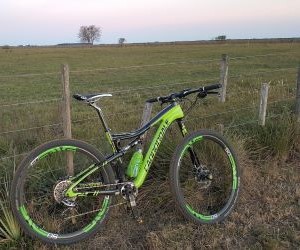Explore the best cycling and bike touring routes in Raleigh, from scenic greenways to wooded trails and smooth city rides—perfect for a vacation on two wheels.
HOW DO I AVOID OVERUSE INJURIES IN MOUNTAIN BIKING?
Mountain biking is thrilling, but it often comes with hidden risks—especially overuse injuries. Unlike sudden crashes, these injuries creep up slowly from repetitive strain on joints, muscles, and tendons. Riders pushing hard without proper rest, technique, or bike setup often face issues like tendonitis, knee pain, or back stiffness that can sideline them for weeks. In this article, we’ll break down science-backed, practical, and field-tested strategies to help you keep pedaling without pain. You’ll learn how to train smarter, optimize your bike fit, and integrate recovery methods so you can ride longer, stronger, and injury-free.

Understanding overuse in biking
Overuse injuries in mountain biking are not freak accidents but the result of repetitive stress accumulating over time. Unlike downhill crashes or trail mishaps, these problems build silently, making them harder to notice until they become performance-limiting. Understanding the mechanics of overuse is the first step to prevention.
What causes overuse injuries?
Most overuse injuries in biking stem from three overlapping factors: excessive training load, biomechanical imbalances, and poor recovery. Pushing mileage or elevation gain too quickly stresses tissues beyond their adaptive capacity. A poorly fitted bike or asymmetrical pedaling style compounds the stress. Finally, neglecting rest and cross-training leaves the body unprepared for sustained repetitive motion.
Common overuse injuries
Mountain bikers often encounter similar injury patterns due to repetitive pedaling and handling demands:
Patellofemoral pain syndrome (knee pain from tracking issues)
Achilles tendonitis from repeated climbing strains
Lower back pain from poor posture or weak core
Wrist and hand numbness from prolonged handlebar pressure
Neck stiffness from sustained head positioning
By recognizing these patterns, riders can spot warning signs early and make adjustments before pain escalates into sidelining injuries.
The role of cumulative stress
Unlike acute trauma, overuse results from cumulative microtrauma. Each ride places small amounts of stress on muscles, joints, and connective tissue. With proper rest, these tissues remodel stronger. Without it, the microdamage accumulates into chronic inflammation and injury. Smart training progression and structured rest days are the antidotes.
Preventive training strategies
Training smarter—not just harder—is the backbone of avoiding overuse injuries. Riders often assume more mileage equals better performance, but structured progression and balance between stress and recovery are what actually build resilience.
Building gradual load
The “10% rule” is a classic guideline: don’t increase weekly mileage or climbing volume by more than 10%. While not a perfect metric, it helps riders pace their progression. Integrating recovery weeks every 3–4 weeks prevents accumulation of fatigue and allows adaptation to lock in. This applies equally to endurance rides and high-intensity interval sessions.
Strength and mobility training
Off-bike training is an overlooked but powerful weapon. Strengthening supporting muscles helps distribute loads evenly and reduce localized stress. Key focus areas include:
Core stability for spinal support
Glute activation for power transfer and knee alignment
Hamstring and quad balance to reduce strain on the knees
Shoulder and wrist conditioning for handling impacts
Mobility drills like dynamic stretching, yoga, or foam rolling reduce stiffness and improve tissue resilience. They help riders maintain optimal joint angles and absorb trail impacts more efficiently.
Recovery as training
Recovery is not downtime—it’s active investment in performance. Sleep, nutrition, and low-intensity movement facilitate tissue repair. Techniques like contrast baths, compression gear, and sports massage accelerate recovery. Tracking resting heart rate or using wearable recovery scores helps quantify readiness and prevent overtraining spirals.
Bike fit and riding adjustments
Even the strongest rider will run into problems if the bike doesn’t fit properly. Precision in bike setup ensures efficient power transfer, balanced load distribution, and reduced repetitive stress. Small misalignments, repeated thousands of times per ride, add up to chronic strain.
Dialing in saddle height and position
Saddle height directly influences knee tracking and pedaling mechanics. A saddle that’s too low overloads the patellar tendon, while one that’s too high stresses the hamstrings and lower back. Forward or backward saddle tilt can either relieve or exacerbate lumbar strain. Professional bike fitting helps tailor adjustments to individual biomechanics.
Handlebar and cockpit ergonomics
Handlebar width, stem length, and grip choice all affect upper body strain. Too wide or narrow bars force unnatural wrist angles, leading to numbness or carpal tunnel symptoms. Improper reach length shifts load to the neck and shoulders. Modern ergonomically shaped grips and vibration-damping gloves reduce prolonged pressure on nerves.
Check handlebar alignment every few months
Use padded gloves for longer rides
Experiment with adjustable stems
Ensure brake levers allow neutral wrist position
Technique and riding style
Overuse injuries are not just mechanical—they’re behavioral. Riders who grind low cadences at high torque place massive strain on knees and hips. Shifting to a higher cadence reduces joint stress while maintaining power output. Likewise, alternating riding positions—standing vs. seated—redistributes load across tissues. On descents, keeping elbows bent and a relaxed grip avoids forearm pump and nerve compression.
Long-term adaptation
Avoiding overuse is about long-term adaptation rather than quick fixes. Regular reassessment of fit, recovery, and training volume ensures that as riders improve, their systems evolve alongside their demands. Overuse prevention isn’t static—it’s dynamic self-management across seasons.
YOU MAY ALSO BE INTERESTED






